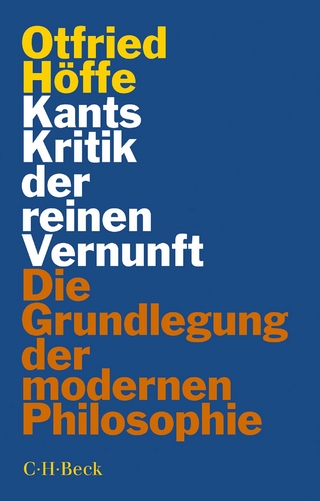
Multimodality, Ideology and Manipulation
Routledge (Verlag)
978-1-032-74493-3 (ISBN)
- Noch nicht erschienen (ca. April 2025)
- Versandkostenfrei innerhalb Deutschlands
- Auch auf Rechnung
- Verfügbarkeit in der Filiale vor Ort prüfen
- Artikel merken
After discussing the BBC's role as a Public Service Provider and the research's theoretical and methodological foundations, three case studies explore the semiotic and cognitive processes involved in media effects. Through an interdisciplinary approach integrating Multimodal Critical Discourse Analysis, Audience Research, and Relevance Theory, the book contributes to discussions on the application of multimodality theory to social concerns and addresses academic communities in media studies, critical discourse studies, and semiotics.
This book will interest scholars in multimodality, critical discourse analysis, media and communication studies, and semiotics.
Jacopo Castaldi is a Senior Lecturer in the Centre for Language and Linguistics at Canterbury Christ Church University, UK.
Contents
List of Figures
List of Tables
Appendices
Acknowledgements
1. Introduction
1.1. Setting the stage: neoliberalism, globalisation and international exploitation
1.2. Media discourse and hegemony
1.3. Ideology and manipulation
1.4. A cognitive approach to Multimodal Critical Discourse Analysis
1.4.1. Multimodal Critical Discourse Analysis
1.4.2. Text interpretation and reception studies
1.4.3. Relevance Theory, cognition and media effects
1.5. Aims, data and method
1.5.1. Participant data
1.5.2. Text data
1.6. Organisation of the book
2. The UK media landscape between public service, neoliberalism and national interest
2.1. Mass media communication
2.2. Media ownership in the U.K.
2.2.1. State owned media: the BBC
2.2.2. Private media ownership
2.3. Control within the neoliberal paradigm
2.4. Neoliberalism
2.5. Critical Studies of the BBC
2.6. Conclusion
3. Researching media effects: cognitive multimodality and reception studies
3.1. A Critical Realist approach to the study of media effects
3.2. Gramsci, civil societies and hegemony
3.3. Manipulation, epistemic vigilance and media effects
3.4. Ideology building through media discourse: a cognitive multimodal approach
3.4.1. Multimodality and representation
3.4.2. Multimodal analysis of film
3.4.3. Multimodality, cognition and the filmic text
3.4.4. Relevance Theory and ideology building
3.5. Conclusion
4. The ‘Rohingya Crisis’ in Myanmar
4.1. Contextual information about the participant and the text
4.1.1. The participant
4.1.2. The text
4.2. The media interaction
4.2.1. Epistemic vigilance towards the source
4.2.2. Epistemic vigilance towards the content
4.3. Multimodal critical discourse analysis of actors, places and events
4.3.1. The Rohingya
4.3.2. The ARSA militants
4.3.3. The military
4.3.4. Aung San Suu Kyi
4.3.5. The international community
4.3.6. The MaBaTha monks
4.3.7. The Burmese people
4.3.8. Critical observations
4.4. Cognitive analysis
4.5. Conclusion
5. Mali between music, history and politics
5.1. Contextual information about the participant and the text
5.1.1. The participant
5.1.2. The text
5.2. The media interaction
5.2.1. Epistemic vigilance towards the source
5.2.2. Epistemic vigilance towards the content
5.3. Multimodal critical discourse analysis of actors, places and events
5.3.1. Thematic level 1: the musicians, traditional Malian instruments, music and Malian society
5.3.2. Thematic level 2: the role of Griots in Malian society, politics, feminism
5.4. Cognitive analysis
5.5. Conclusion
6. The ‘making’ of Australia
6.1. Contextual information about the participant and the text
6.1.1. The participant
6.1.2. The text
6.2. The media interaction
6.2.1. Epistemic vigilance towards the source
6.2.2. Epistemic vigilance towards the content
6.3. Multimodal critical discourse analysis of actors, places and events
6.3.1. Part 2
6.3.2. Part 3
6.3.3. Part 4
6.3.4. Part 5
6.3.5. Part 6
6.3.6. Part 7
6.3.7. Part 8
6.4. Cognitive analysis
6.5. Conclusion
7. Media effects, ideology and manipulation
7.1. Audience research and agency
7.2. Evidential effects and contextual filters
7.3. Ideological effects
7.3.1. Modifying ideological effects
7.3.2. Improving ideological effects
7.4. Multimodal manipulation of the epistemic vigilance towards the source
7.4.1. The text producers
7.4.2. The hosts and the experts
7.5. Multimodal manipulation of the epistemic vigilance towards the conent
7.5.1. Constraints on context selection
7.5.2. Constraints on the emotional response
7.6. Critical considerations and conclusions
8. Conclusion
8.1. Summary of findings
8.2. Methodological reflections and implications
8.3. Theoretical reflections and implications
8.4. Direction for further research
8.5. Conclusion
Index
| Erscheint lt. Verlag | 16.4.2025 |
|---|---|
| Reihe/Serie | Routledge Studies in Multimodality |
| Zusatzinfo | 11 Tables, black and white; 6 Line drawings, black and white; 48 Halftones, black and white; 54 Illustrations, black and white |
| Verlagsort | London |
| Sprache | englisch |
| Maße | 152 x 229 mm |
| Themenwelt | Geisteswissenschaften ► Philosophie ► Erkenntnistheorie / Wissenschaftstheorie |
| Geisteswissenschaften ► Sprach- / Literaturwissenschaft ► Sprachwissenschaft | |
| Sozialwissenschaften ► Kommunikation / Medien ► Medienwissenschaft | |
| ISBN-10 | 1-032-74493-6 / 1032744936 |
| ISBN-13 | 978-1-032-74493-3 / 9781032744933 |
| Zustand | Neuware |
| Informationen gemäß Produktsicherheitsverordnung (GPSR) | |
| Haben Sie eine Frage zum Produkt? |
aus dem Bereich


